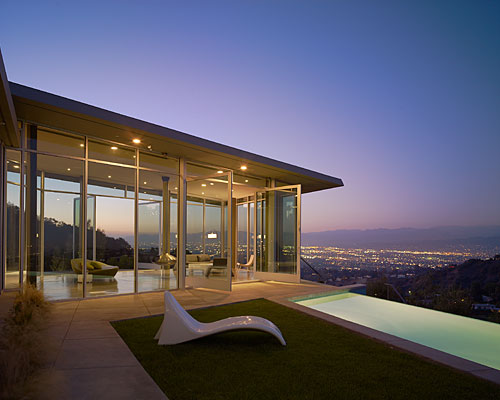
Interior designer: Elizabeth Paige Smith
Engineer(s):
Structural Dan Echeto
Consultant(s)
Landscape: Bill Nicholas of Nicholas Budd Dutton Architects
Other:
Furniture Elizabeth Paige Smith
Special Fabrication Spectrum Oak
General contractor: Belzberg Architects
Photographer Benny Chan (Fotoworks)
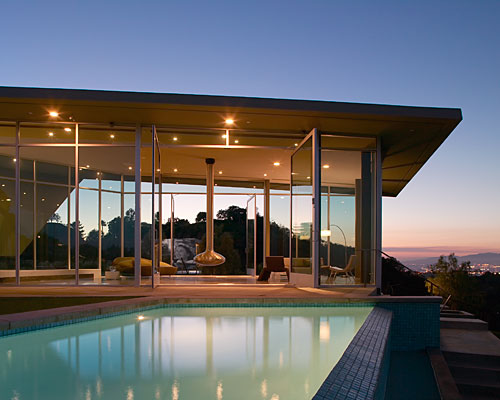
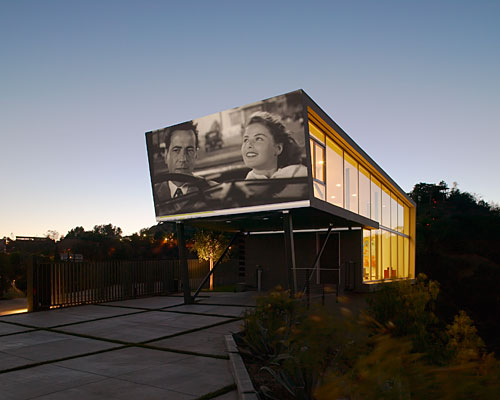
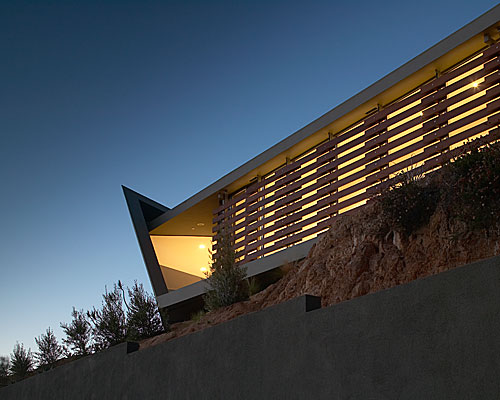
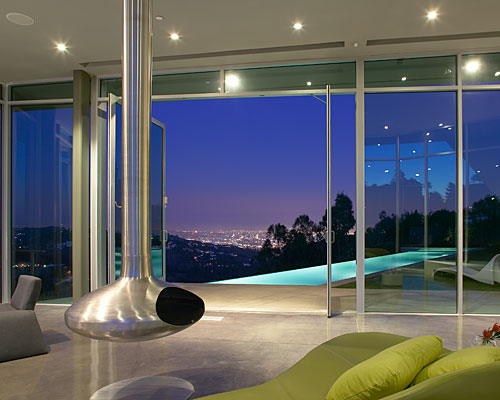
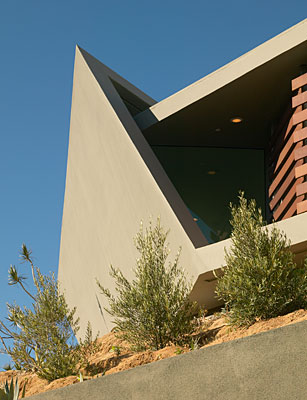
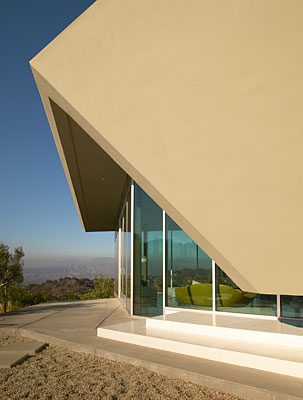
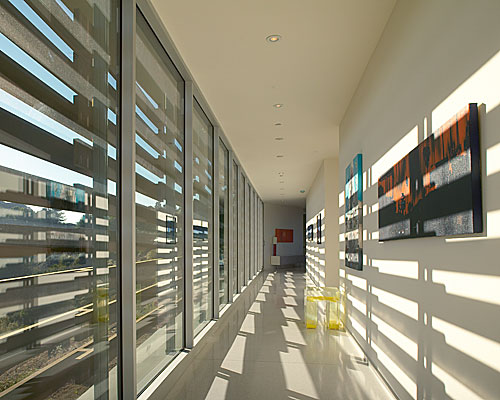
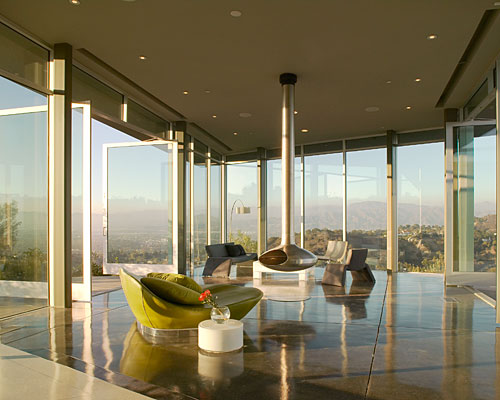
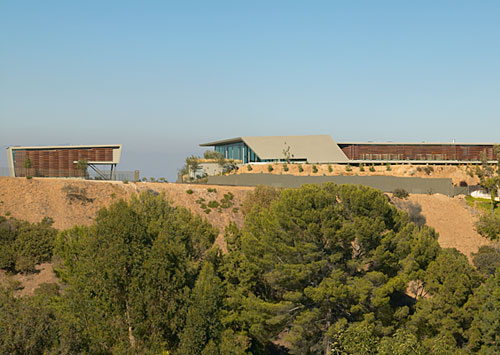
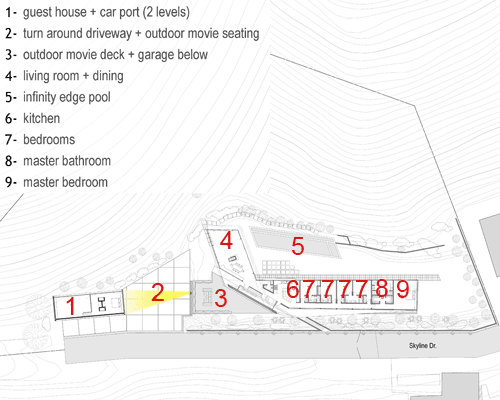
Skyline Residence
Photo © Benny Chan
Rate this project:
Based on what you have seen and read about this project, how would you grade it? Use the stars below to indicate your assessment, five stars being the highest rating.
Rated by 13 people
Rate This
----- Advertising -----
The resulting 5,200-square-foot residence and guesthouse is a linear structure 20-feet wide and 120-feet long, enclosed by a single, concrete folded surface with glazing and wood screened walls on the southern and eastern sides. While the concrete envelope bends to conform to the top of the ridge where the sun is harshest, the screen, made of thin, pressure-treated recycled wood panels, keeps low evening sun from flooding the interiors. Four bedrooms and a study are located along a corridor, which terminates in an open kitchen, dining area, and dramatic living room with a Fireorb fireplace and floor-to-ceiling glass walls on three sides. The living room opens to an outdoor movie deck (which sits atop the garage). Films are projected onto the outer wall of the guesthouse. “My neighbors only had a problem when we played Guitar Hero too loud,” says Belzberg.
By “we,” Belzberg is referring to the members of his 13-person firm. The Skyline Residence, while created as a home for his family, was also the fourth in a series of projects built entirely by the office, which is mostly staffed by young designers in their 20s and early 30s (Belzberg is an ancient 43). “We’ve been in practice for 12 years, and every couple of years we try to get a project that will get everyone engaged and inspired,” he says. “It’s the philosophy of the firm that everyone has a say, and everyone makes an impact. And it’s a learning opportunity.”
To further the on-the-job training quotient, Belzberg’s second-biggest challenge with this house (after working with the difficult site), was to make it as sustainable as possible given a constrained budget. At $180 per square foot, he couldn’t opt for photovoltaics or other high-tech green techniques. But his firm did whatever it could to be eco-conscious with products and process throughout. Oriented to take advantage of sunlight and wind, the house is designed to make interior temperatures comfortable and consistent with as little air conditioning and heating as possible. While doing their minimal excavation, the team dug only as much earth as could be reused in other areas of the project. Furthermore, granite was decomposed and reused under concrete slabs, to level drain pipes, for a drainage field under the infinity pool, and as a walking surface for the viewing deck. When possible the team used only local building products to minimize transportation emissions and incorporated low-e glass; eco-friendly furniture, fixtures, and appliances; recycled wood framing and flooring; and even plants brought from a recently demolished nearby residence. “Everything in the house is meant to last as well,” says Belzberg. “It’s all hard, weathered surfaces that won’t need to be replaced.”
Although Belzberg doesn’t live in the house now (he got married and opted to stay downtown near his office), he says this is the project that keeps on giving. “We’ve rented the house to a family who loves it, and the rent money is going right back into the office.”
'REF. > Architecture' 카테고리의 다른 글
| [ ARTechnic architects ] Shell (0) | 2009.01.06 |
|---|---|
| [ Manuel Ocaña ] Ocaña de España (0) | 2009.01.06 |
| [ Rocker-Lange ] ORDOS 100 #6 (0) | 2009.01.04 |
| [ Predock ] Cornerstone Arts Center (0) | 2009.01.03 |
| [ Predock ] Highlands Pond House (0) | 2009.01.03 |